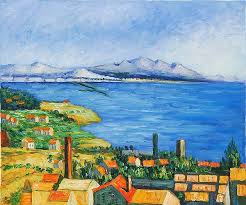Painting with Oils 6th September
Many materials can be used to paint on: canvas, canvas board, hardboard or paper, but all must be sealed before starting. Those bought ready made from art suppliers are “ready to go” but if you use hardboard or paper, you will need to apply a coat of size or, as Caroline does, a coat of household emulsion.
The importance of working fat on lean:
Start with thinned layers of paint for under painting and build up to thicker layers with added linseed oil for fluidity. You can choose from a range of oil mediums: linseed oil, poppy seed oil, walnut oil, and safflower oil. The choice of oil imparts a range of properties to the oil paint, such as the amount of yellowing or drying time… Water based oils need their own specific oils, as per the makers’ instructions.
Use a thin under-paint consisting of a colour and turpentine, which won’t take too long to dry. You can then add layers of subsequent paint without delaying too long.
With over-painting, sometimes if too many layers are applied, it can become muddy and overworked so the options are to scrape off or leave to dry and paint over.
Glazing – Building up layers of thin paint. As with the last demonstration on 16th August Glazing on Black & White Acrylics), start with a thin layer of paint + turps which allows the sketch to show through and keep over-painting, adding heavier amounts of colour. You can also use a technique called Impasto – this involves using the paint thickly to show brush or knife marks, Van Gogh painted in this way.
Disposal: Oil paints and the thinning mediums are flammable, so soak any rags or paper towel in water before throwing them in the bin. They can dry out, and become dangerously combustible if left to dry out.
Brushes – Oil painting can ruin brushes so I buy cheap from Sussex Stationers. Bristle brushes are more hard wearing and good cleaning with white spirit will keep them going for quite a long time.
Makes of paint: Lukas, Aqua-duo, Windsor and Newton.

